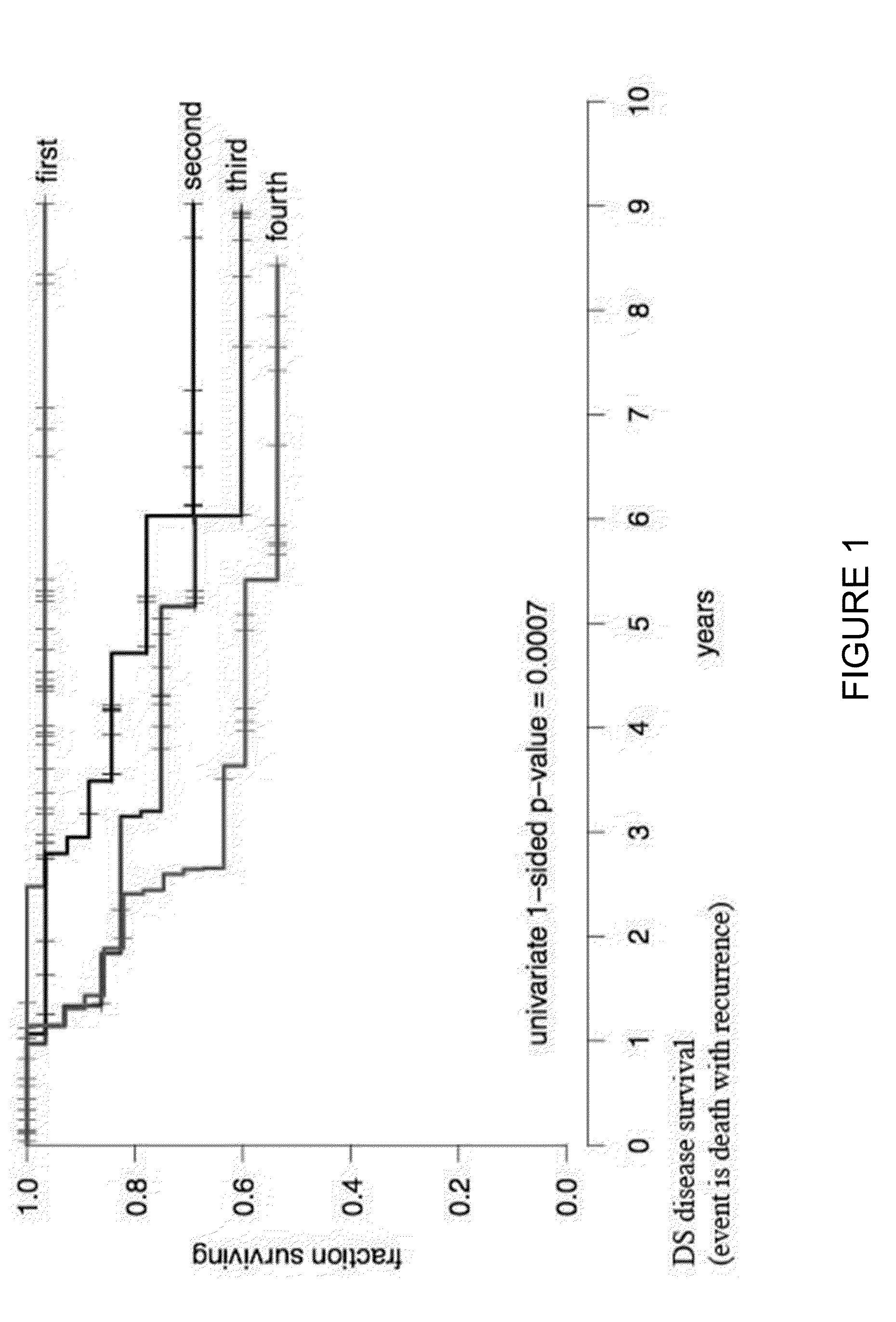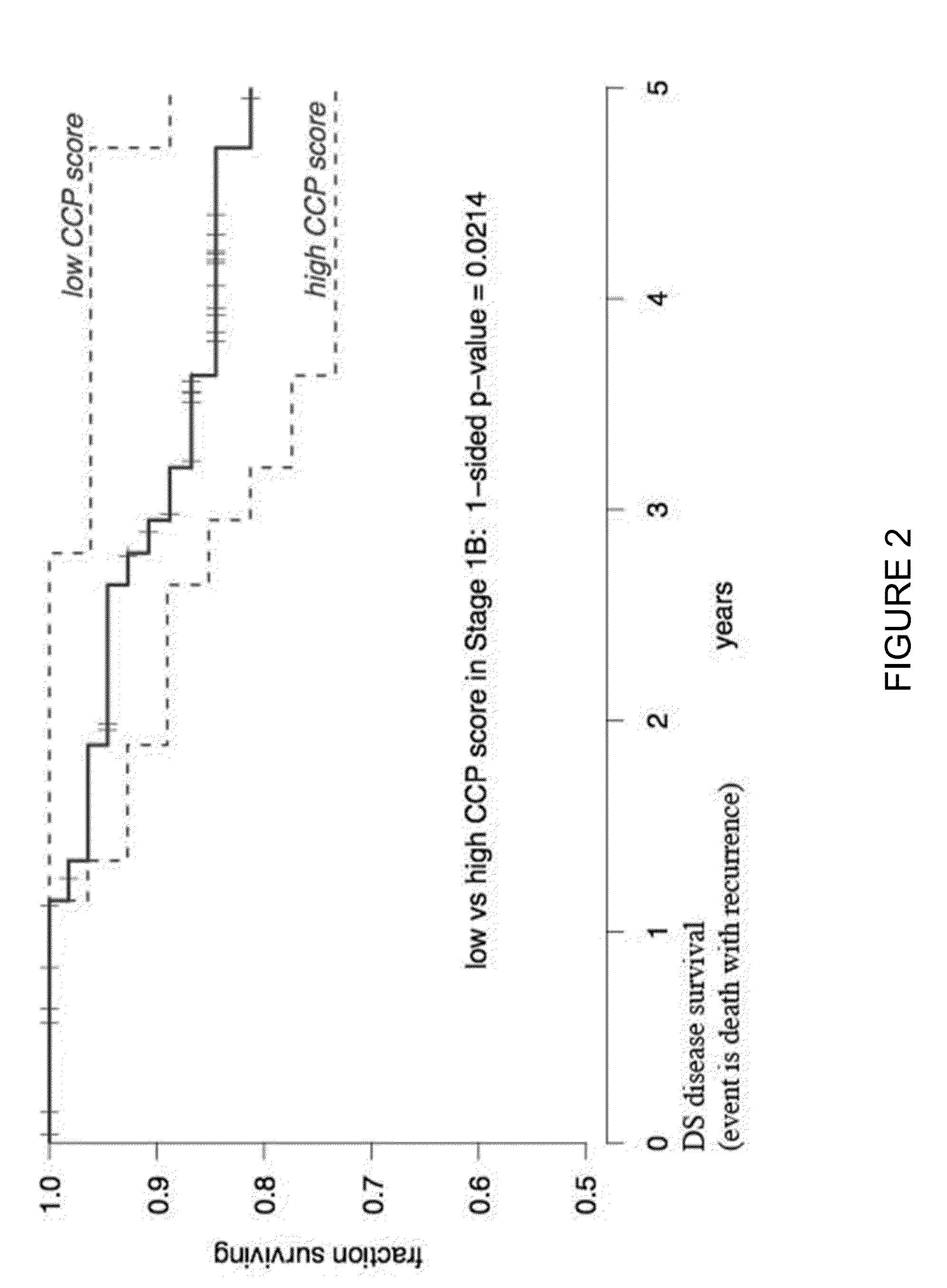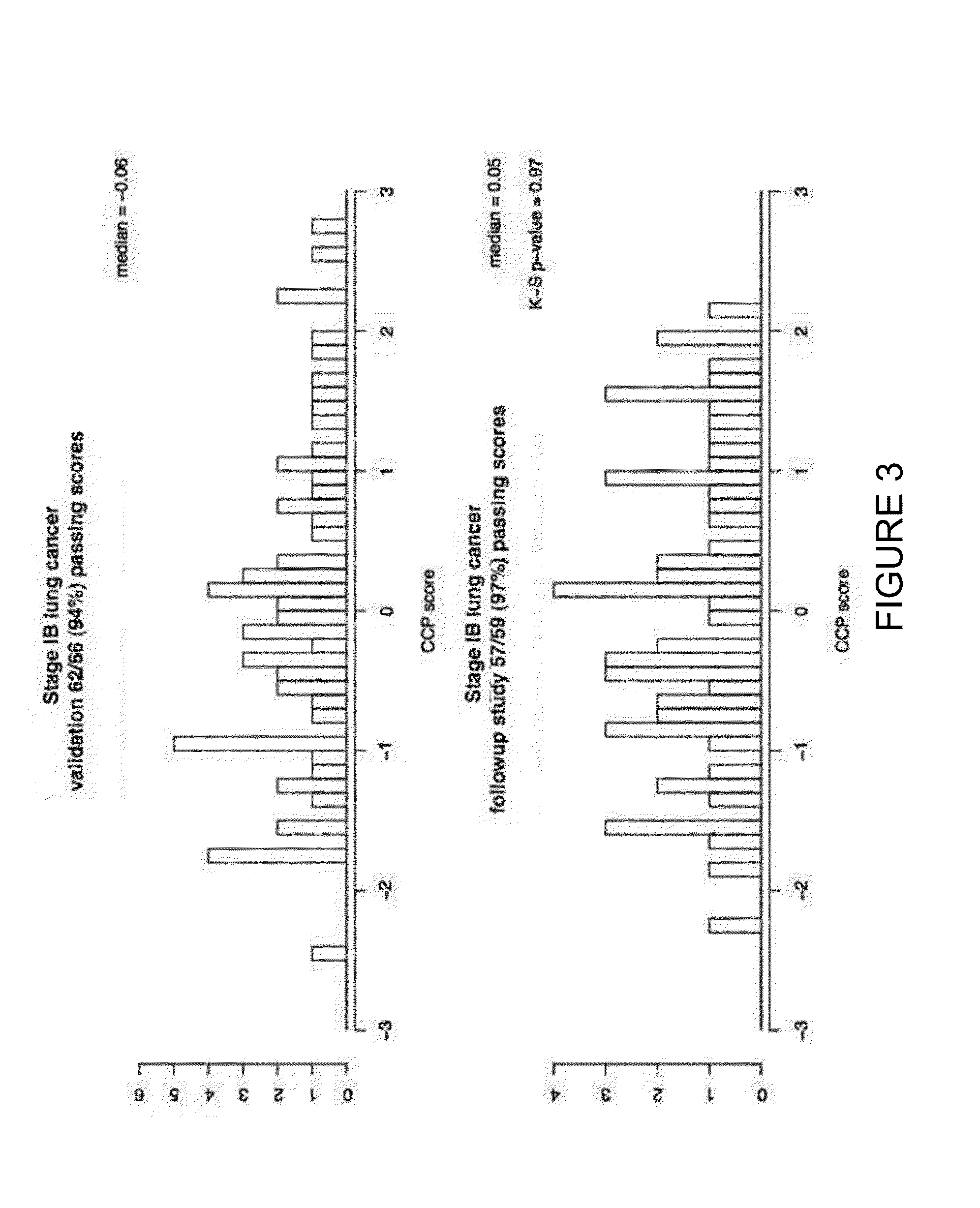Gene signatures for lung cancer prognosis and therapy selection
a gene signature and lung cancer technology, applied in the field of molecular classification of diseases, can solve the problems of ia or ib lung cancer facing the difficult decision of whether to undergo painful and expensive adjuvant chemotherapy or run the risk of cancer recurrence after surgery
- Summary
- Abstract
- Description
- Claims
- Application Information
AI Technical Summary
Benefits of technology
Problems solved by technology
Method used
Image
Examples
example 1
Introduction
[0160]This Example 2 builds on the study summarized in Example 1 above by combining the analysis in Example with analysis of additional samples. Unless indicated otherwise, all methods (e.g., sample preparation, gene expression analysis, CCP score calculation, statistical analysis, etc.) in this Example 2 were as described in Example 1. In this study, the CCP score was applied to stage I-II NSCLC ADC patients from a combined sample cohort (referred to herein as Combined Cohort) of 381 FFPE samples.
Patient Populations
[0161]Detailed information regarding patients from the Combined Cohort is provided in Table 1. The Combined Cohort was an aggregation of patient samples from two separate source cohorts, designated herein as “S1” and “S2.” S1 Cohort: 186 FFPE samples were obtained from 185 resectable stage I NSCLC ADC patients, and matching clinical data. Samples from 177 patients produced passing CCP scores. Two patients were omitted due to missing clinical data related to s...
PUM
| Property | Measurement | Unit |
|---|---|---|
| Fraction | aaaaa | aaaaa |
| Fraction | aaaaa | aaaaa |
| Fraction | aaaaa | aaaaa |
Abstract
Description
Claims
Application Information
 Login to View More
Login to View More - R&D
- Intellectual Property
- Life Sciences
- Materials
- Tech Scout
- Unparalleled Data Quality
- Higher Quality Content
- 60% Fewer Hallucinations
Browse by: Latest US Patents, China's latest patents, Technical Efficacy Thesaurus, Application Domain, Technology Topic, Popular Technical Reports.
© 2025 PatSnap. All rights reserved.Legal|Privacy policy|Modern Slavery Act Transparency Statement|Sitemap|About US| Contact US: help@patsnap.com



